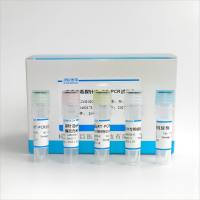Analysis of Gene Expression in Bone by Quantitative RT-PCR
互联网
453
The isolation of undegraded RNA, free from inhibitors of reverse transcription-polymerase chain reaction (RT-PCR), is a major technical challenge in the analysis of gene expression in the skeleton. Bone is a mineralized tissue containing an abundant matrix, which makes RNA isolation difficult. On the positive side, however, frozen bone is quite brittle and can be ground to a powder, thus releasing the cell contents. Reno and colleagues (1 ) evaluated 12 different protocols for isolating total RNA from small amounts of rabbit ligament, cartilage, and tendon using phenol-guanidinium-based reagents. Like bone, these tissues contain few cells in an abundant organic matrix. Absence of ribosomal bands, nondetection of glyceraldehyde-3-phosphate dehydrogenase (GAPDH) mRNA on Northern blotting, presence of DNA and/or protein contamination, and insoluble RNA pellets generated by these procedures led to the development of the Trispin method, based on a combination of two commercially available kits (2 ). In this procedure, the tissue is powdered in a stainless steel ball mill vessel that is cooled in liquid nitrogen. We have used a ball mill and modified Trispin method to extract high-quality, RT-PCR-ready RNA from bone samples.









